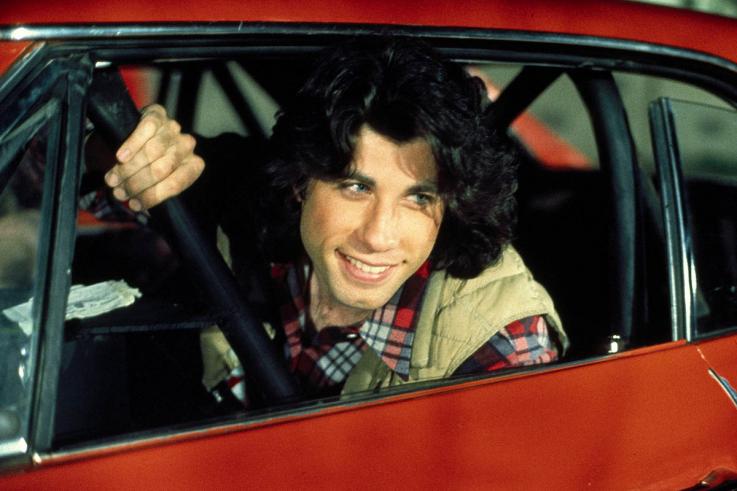CRONENBERG, KUBRICK, ARONOFSKY ALSO CHECKED, YET PEELE'S BOLD VISION IS HIS OWN
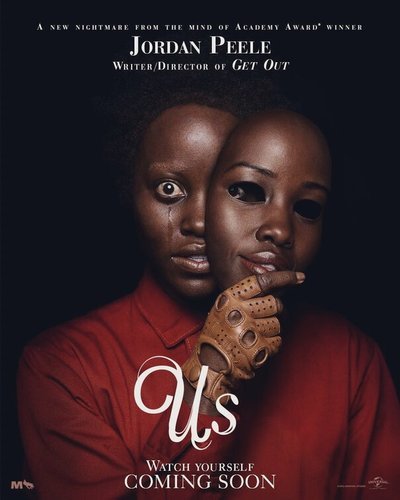 "I want to do what Hitchcock did, what Spielberg did, what Brian De Palma did — dark tales," Jordan Peele told an interviewer on the red carpet at last year's Academy Awards. His second feature as writer/director, Us, premiered at the SXSW Film Festival yesterday in Austin, Texas, and early reviews popping up are mentioning Brian De Palma and other filmmakers. Yet each review also stresses that while Peele might wear those references on his sleeve, the bold vision behind the film is uniquely his own. A couple of the reviews mention De Palma in specific relation to a standout split-diopter shot Peele uses in Us. However, Peele is surely familiar with Steven Spielberg's use of split-diopters in Jaws, as well-- one of these reviews mentions that the boy in Peele's film wears a Jaws T-shirt. Here are some excerpts:
"I want to do what Hitchcock did, what Spielberg did, what Brian De Palma did — dark tales," Jordan Peele told an interviewer on the red carpet at last year's Academy Awards. His second feature as writer/director, Us, premiered at the SXSW Film Festival yesterday in Austin, Texas, and early reviews popping up are mentioning Brian De Palma and other filmmakers. Yet each review also stresses that while Peele might wear those references on his sleeve, the bold vision behind the film is uniquely his own. A couple of the reviews mention De Palma in specific relation to a standout split-diopter shot Peele uses in Us. However, Peele is surely familiar with Steven Spielberg's use of split-diopters in Jaws, as well-- one of these reviews mentions that the boy in Peele's film wears a Jaws T-shirt. Here are some excerpts:Britt Hayes, Birth. Movies. Death.
On its outermost surface, Us is an effective survival horror thriller in the vein of The Strangers, featuring phenomenal performances from all involved. Tim Heidecker and Elisabeth Moss make a decadent meal out of their supporting parts as friends of Gabe and Adelaide, but Nyong'o's performance rules them all with a transcendent duality that demands repeat viewings.As with Get Out, Peele recontextualizes his influences into strong aesthetic choices; the opening credits sequence – a slow zoom out from the eye of a caged rabbit, revealing it as but one of many – evokes the cerebral horror of Brian De Palma and David Cronenberg. In particular, the influence of the former's Sisters and the latter's preoccupation with the body/self as foreign object are apparent throughout. Us is so layered in meaning it may as well be an immersive experience; a metatextual funhouse mirror akin to the one young Adelaide encounters in her early flashback. It's a film about mental illness and a film about trauma and PTSD. It's a film about imposter syndrome and never quite feeling as though you've earned the things you have or the people who love you. It's a film about our country, as Adelaide sharply observes that these "others" are Americans – and we are our own worst enemy, just lying in wait for the moment when we can easily topple our own lives and all we've built around them.
It's a film about the part of ourselves that we hate the most; the weak, needy part that's all unseemly desire and craven id; the part that we refuse to acknowledge because it is the absolute worst of us, or so we think. What if you ignored that part of yourself and refused to nourish it, but it found a way to grow in the shadows? What if it found a way to feed itself, and learned to approximate your movements and sounds? What if it got out? Imagine being confronted by this existential concept made feral reality; imagine the reckoning.
Jason Bailey, Flavorwire
If the opening scenes are deliberate, once Us gets going, it goes; the efficiency of the turn is striking, as is the confidence with which Peele sets his scenes, moves his camera, and freaks us out. In scene after scene he creates a mood of offhand, everyday spookiness, and then turns the screw with genuinely disturbing imagery. The visual strategies foreshadow the identity of the invaders, each of whom seems a bizarro replica of a member of the family; Peele is constantly framing his characters in mirrors, glass reflection, and even, late in the film, a thematically appropriate De Palma-style split diopter shot. The cinematographer is Mike Gioulakis (his credits also include Glass and It Follows), and he spends much of the film, which is set mostly over one long night, playing with light and dark and dark skin, in backgrounds and shadows.The editing is sharp – there’s a suite of cross-cut one-on-one confrontations, once each of our protagonists meets their doppelganger, that’s sort of staggering – but Peele is always careful to give his actors their moments. (Elisabeth Moss has one, carefully applying lipstick in a mirror, that is absolutely chilling.) Every performance lands, thought Nyong’o has the movie star role, and plays it as such; her payoff moments deliver, but she’s unnervingly creepy when playing her character’s villainous half.
And yet, with all those virtues noted, Us can’t quite match Peele’s debut. Part of that is just a question of timing; Get Out is a terrific thriller that also arrived at precisely the right moment, in the morning-after hangover of a stupefying presidential election, and seemed a timely reminder of the evil that our smiling friends and neighbors are capable of.
But if Get Out was accidental Trump commentary, Us is decidedly deliberate, particularly in its third-act explanations and revelations, and when Peele preceded the SXSW screening by announcing, “the movie is about a lot of things,” he tipped his hand a bit – particularly in the opening stretches, there’s a fair amount of seemingly random setup and sheer oddity, bunnies under opening credits and vague on-screen text about underground tunnels and a lot of details about the 1986 Hands Across America project. Some of it pays off, but in a way that makes those elements feel like side scrawlings in a director’s notebook, plot points created to accommodate stuff he thought would be cool to throw into the movie, rather than growing organically from the material.
Get Out was the latter, and as a result, it was tight as a drum. Us is not that, which isn’t entirely a criticism. Such ambition – a sophomore filmmaker grasping to make a big statement, and fumbling a bit in the process – is not only forgivable, but admirable. Ultimately, he’s hoping to provoke thought, self-examination, even anger.
“My favorite thing is the idea that people will leave ready to have a conversation with whoever they’re with,” Peele explained in the post-screening Q&A. “I have a very clear meaning and commentary I’m trying to strike with this film, but I also wanted to design a film that’s very personal for every individual.
“In the broader strokes of things, this movie is about this country. And when I decided to write this movie, I was stricken by the fact that we are in a time where we fear the other. Whether it is the mysterious invader that we think is gonna come kill us and take our jobs, or the faction that we don’t live near that voted a different way than us… we’re all about pointing the finger. And I wanted to suggest that maybe the monster we really need to look at has our face. Maybe the evil is us.”
Monica Castillo, RogerEbert.com
As he did with “Get Out,” Peele pays significant tribute to the films that have influenced him in “Us.” Though this time, there doesn’t seem to be a consensus, as I spoke with others who saw the movie, we focused on different titles that stood out to us. For me, “The Shining” looked to be the film that received the most nods in “Us,” including an overhead shot of the Wilson family driving through hilly forests to their vacation home, much like the Torrance family does on the way to the Overlook Hotel. There’s also a reference to “The Shining” twins, a few architectural and cinematography similarities and in one shot, Nyong’o charges the camera with a weapon much like Jack Nicholson menacingly drags along an ax in a chase. However, “Us” is not just a love letter to one horror movie. Peele also pays tribute to Brian De Palma with a split diopter shot that places both Adelaide and her doppelgänger in equal focus for the first time in the movie. There’s also a tip of the hat to Darren Aronofsky’s “Black Swan” in terms of dueling balletic styles and a gorgeously choreographed fight scene that looks like a combative pas de deux.




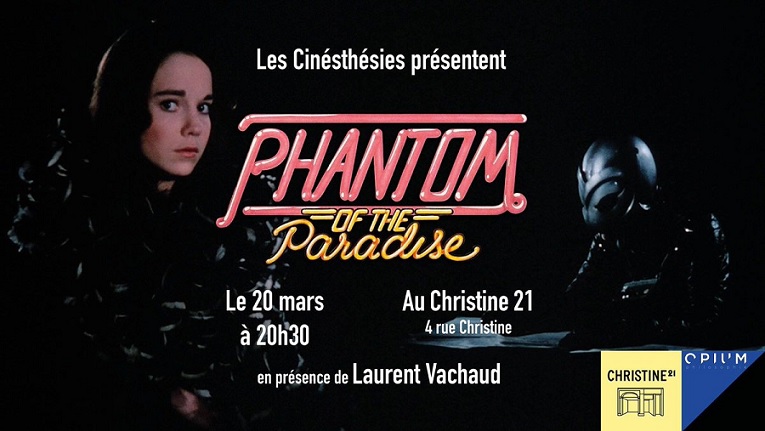
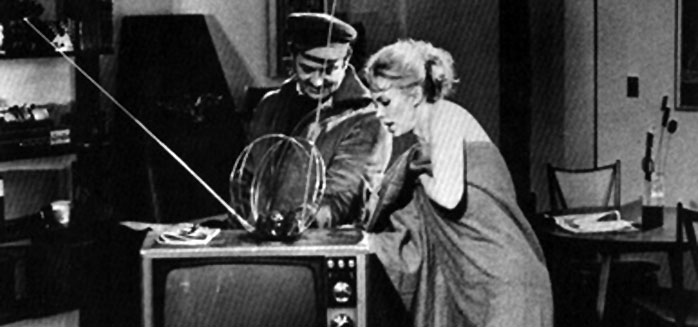
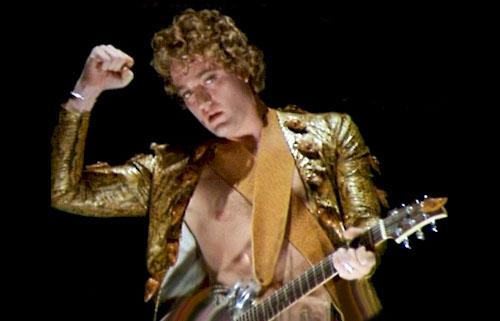 Gerrit Graham will be a special guest at
Gerrit Graham will be a special guest at 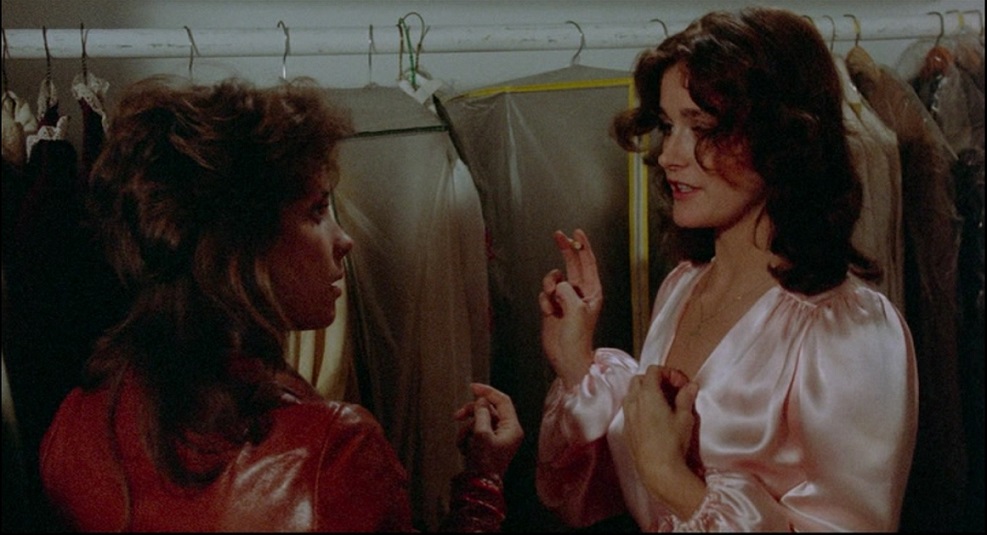
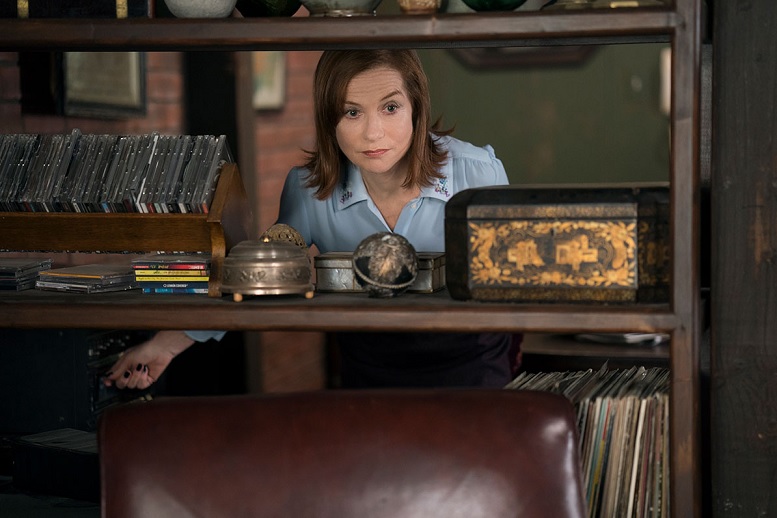
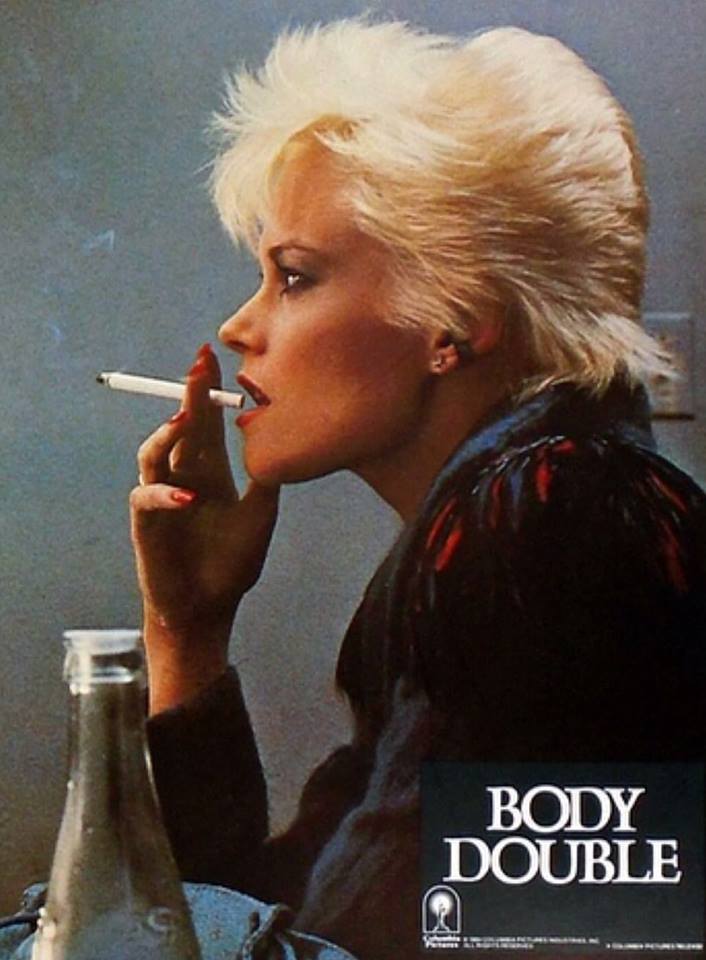 As part of
As part of 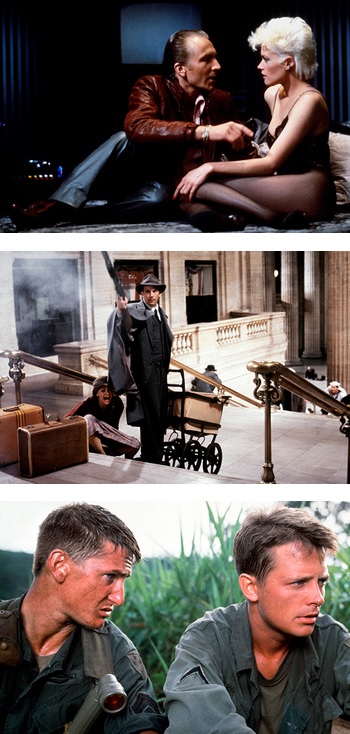 Samuel Blumenfeld, co-author (with Laurent Vachaud) of Conversations with Brian De Palma, will present two De Palma films March 27th at the
Samuel Blumenfeld, co-author (with Laurent Vachaud) of Conversations with Brian De Palma, will present two De Palma films March 27th at the 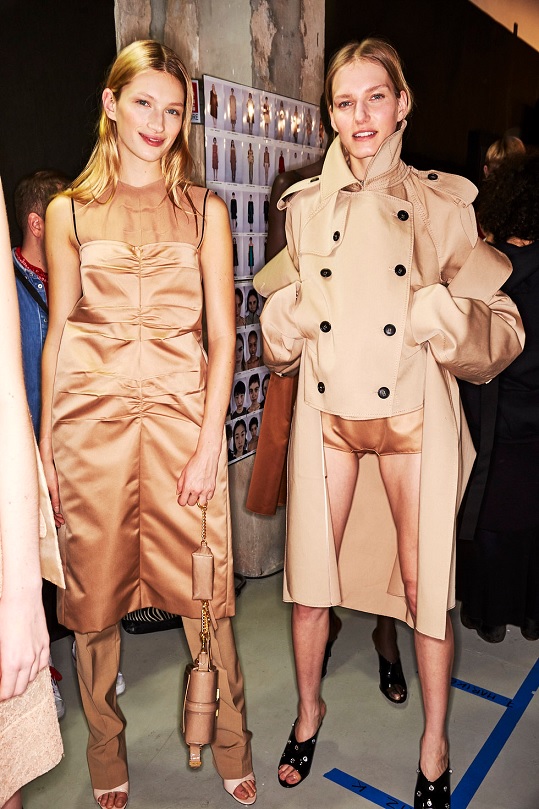 "No. 21 Explores Italian Film Noir," reads the headline of
"No. 21 Explores Italian Film Noir," reads the headline of 